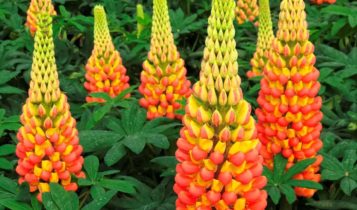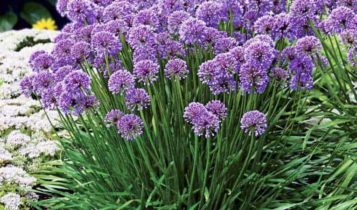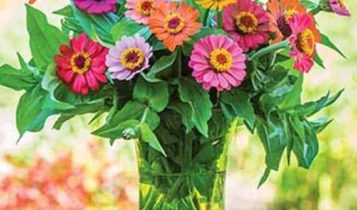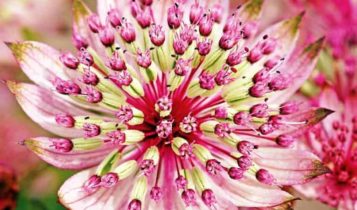
Want to add color to gardens? Plant flowers!
There are hundreds of varieties of flowering plants that can add color to gardens. These colorful plants are available from websites, mailorder catalogs and local garden centers. In addition to the old favorites, there are always new varieties of flowering perennials, annuals and shrubs that practically demand a spot in your yard and garden.
These beauties will thrive in a variety of growing conditions, and they will bring color and delight to your garden. If you want to get even more adventurous, add cold-hardy tropical plants to your garden, too!
Lupine Gladiator is a real show-off in the garden

Lupine Westcountry™ ‘Gladiator’ is one of those flowering plants that is comfortable in the spotlight. This lupine blooms from late spring to the peak of summer and sets large, vibrant spear-like blooms on tall stems.
‘Gladiator’ sends up massive torches of warm-orange and lemon-yellow blooms which attract hummingbirds—and plenty of human attention as well. The flower petals develop from the bottom up, so the maturing flower spikes are topped with immature lime green petals. With its dramatic contrast and bold colors, there are few things that shine brighter in the garden than this gorgeous Lupine!
Lupine Westcountry™ ‘Gladiator’ loves sunlight and is resistant to deer and rabbits. The flower spikes grow 24-30 inches tall and the plants stay a manageable 20-25 inches wide. This is a great plant in borders or when mass planted for dramatic effect, and the flower spikes look great in cut flower arrangements. This variety prefers moist, well-drained soil, but it can also handle occasional dry spells. ‘Gladiator is cold hardy throughout USDA zones 3-9. Plants are available at www.waysidegardens.com.
2018 Perennial Plant of the Year

The flowerheads are perfectly round and reach about 2 inches in diameter, studded on all sides with purple florets tinged with red. Like all Allium, the plant has a scent (it’s an onion, after all), which keeps away nibbling rabbits, deer and other hungry creatures. On the other hand, butterflies and bees find the blooms enticing.
This ornamental onion reaches about a foot high and wide, with a dense bouquet of dark green stems topped by bobbing blooms. Unlike older varieties, it won’t scatter seed all over the garden; it concentrates all its energy on setting flowers instead of going to see– and the results are magnificent. Just give it plenty of sunshine, well-drained soil on the light side, and wait for the flowers. Available from www.waysidegardens.com. (Photo by Walters Gardens)
Gorgeous multi-color zinnias, all summer long

The annual plants bear purple, pink, orange, salmon, yellow or cream petals that surround bright-yellow stamens for a bloom that measures 2-3 inches across. The flowers reach up to 30 inches tall and the plants can reach a spread of 24 inches. Exclusively from www.burpee.com.
A sparkling star in the garden

Sparkling Stars Pink will thrive in bright sunny garden spots and also in shaded areas such as under trees. The plant reaches 24-28” tall and 16” wide, and it prefers moist, fertile soil. Available from www.waysidegardens.com.
Add some “Sunset Magic” to southern gardens

Sunset Magic is an easy-to-grow, disease resistant variety. It responds well to pruning, but it naturally stays a manageable size (5-10 feet tall and 4-8 feet wide) so it will fit nicely into smaller gardens. For a stunning garden effect, plant this variety with white- flowered crape myrtles or yellow daylilies.
Sunset MagicTM Crape Myrtle thrives in USDA zones 7-9. Give it full sun in well-drained soil and it will delight year after year with stunning color. Plants are available at www.naturehills.com.
Hibiscus ‘Pinot Noir’

‘Pinot Noir’ is easy to grow and forms a nice, upright bush. Like all hibiscus varieties, it grows best in full sun with plentiful water and fertilizer to optimize its blooming potential. This plant is cold hardy to USDA zone 10, so it should be grown outdoors in a container and brought inside during the colder months in most climates. From www.logees.com.
And that’s how to add color to gardens!



Leave a Reply